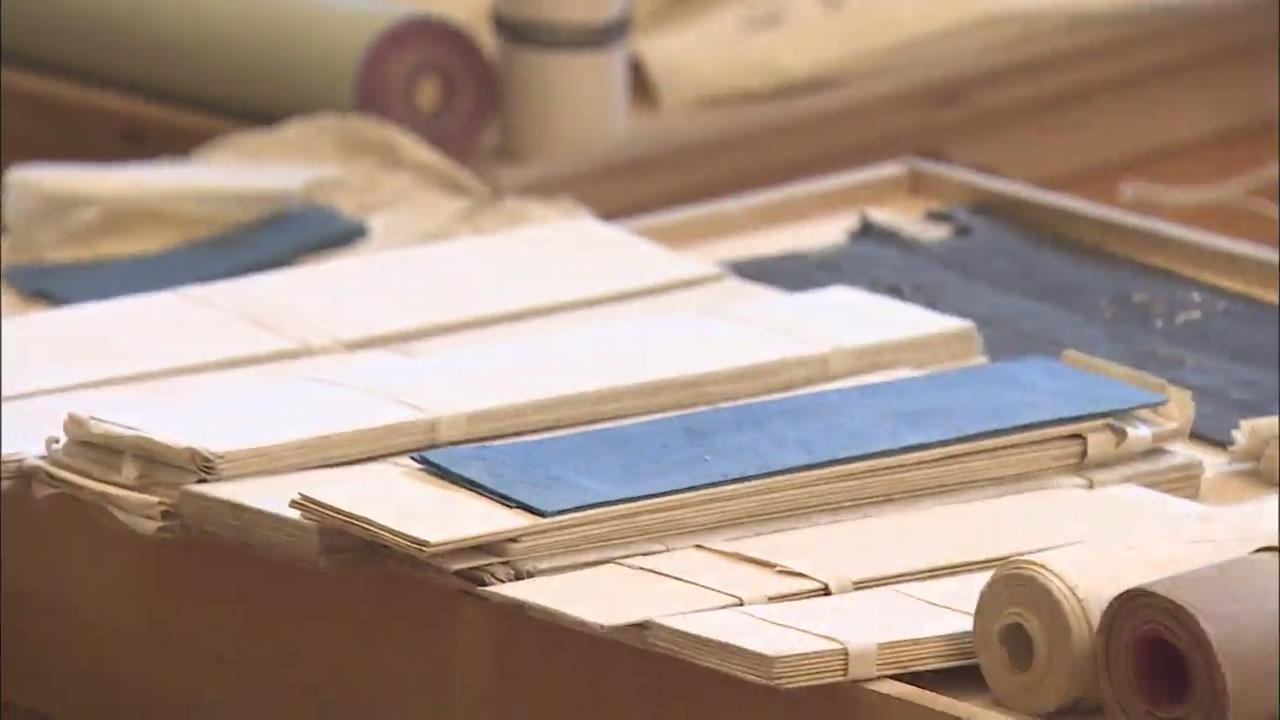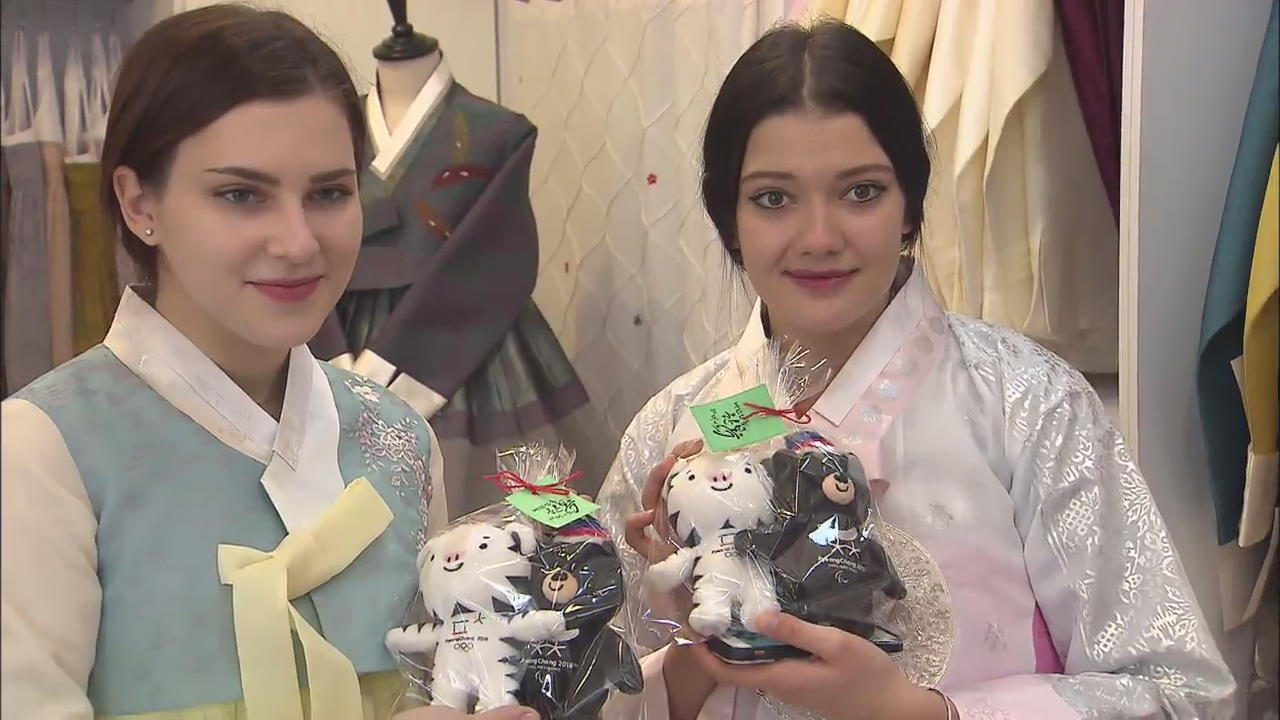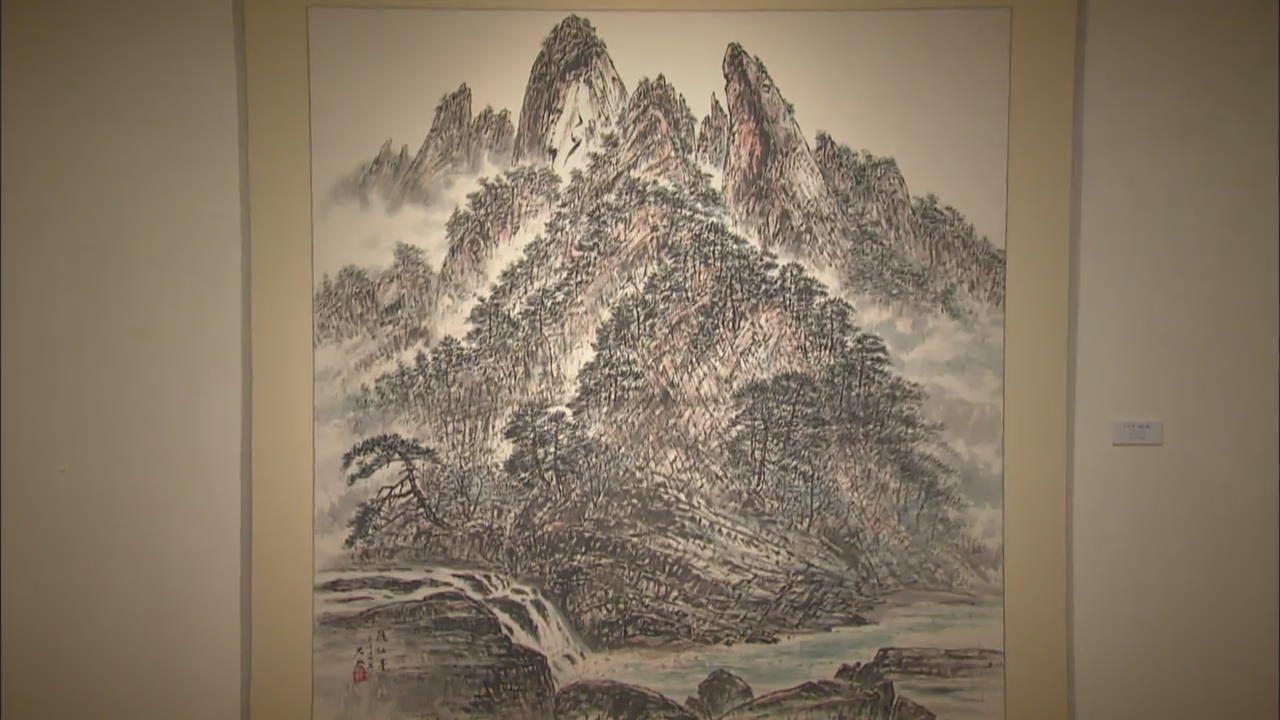“Hanji” Restoration
입력 2017.12.04 (15:02)
수정 2017.12.04 (16:46)
읽어주기 기능은 크롬기반의
브라우저에서만 사용하실 수 있습니다.
[Anchor Lead]
Traditional Korean paper "hanji" is being used in a relic restoration project put on by the Louvre Museum in France. A trial using hanji for restoring French relics has produced nice results. So while Japanese paper accounts for 99 percent of the global market for paper used in restoring cultural relics, Korean paper is gradually winning recognition in the international cultural relic market with its excellent quality.
[Pkg]
This desk was used by Emperor Maximilian the Second of the Kingdom of Bavaria during the 19th century. The Louvre Museum in Paris recently completed a two-month-long project to restore the decoration on a handle of the desk, which had kept falling off. Korea's traditional paper hanji was used in restoring this fancy, golden, delicately decorated desk. This is the first time that Louvre has used hanji for restoring cultural relics.
[Soundbite] Ariane de La Chapelle(Director, Louvre Restoration Institute) : "Restorers are very satisfied with restoration results. In particular, hanji is greatly durable."
With this opportunity, the Louvre even held an academic conference by inviting experts on hanji. The French museum paid attention to the manufacturing process of hanji, which consists of more than 100 steps. It concluded that hanji is better than traditional Japanese paper in terms of various aspects, including durability.
[Soundbite] Kim Choon-ho(Hanji-making Expert) : "As a person making hanji, I think that it is very important to improve hanji to meet the needs of the West."
However, the reality is disappointing, as Japanese paper accounts for 99 percent of special paper used for cultural relic restoration. Traditional Korean paper hanji is preparing to make a new leap forward in France, a nation known as a cultural powerhouse.
Traditional Korean paper "hanji" is being used in a relic restoration project put on by the Louvre Museum in France. A trial using hanji for restoring French relics has produced nice results. So while Japanese paper accounts for 99 percent of the global market for paper used in restoring cultural relics, Korean paper is gradually winning recognition in the international cultural relic market with its excellent quality.
[Pkg]
This desk was used by Emperor Maximilian the Second of the Kingdom of Bavaria during the 19th century. The Louvre Museum in Paris recently completed a two-month-long project to restore the decoration on a handle of the desk, which had kept falling off. Korea's traditional paper hanji was used in restoring this fancy, golden, delicately decorated desk. This is the first time that Louvre has used hanji for restoring cultural relics.
[Soundbite] Ariane de La Chapelle(Director, Louvre Restoration Institute) : "Restorers are very satisfied with restoration results. In particular, hanji is greatly durable."
With this opportunity, the Louvre even held an academic conference by inviting experts on hanji. The French museum paid attention to the manufacturing process of hanji, which consists of more than 100 steps. It concluded that hanji is better than traditional Japanese paper in terms of various aspects, including durability.
[Soundbite] Kim Choon-ho(Hanji-making Expert) : "As a person making hanji, I think that it is very important to improve hanji to meet the needs of the West."
However, the reality is disappointing, as Japanese paper accounts for 99 percent of special paper used for cultural relic restoration. Traditional Korean paper hanji is preparing to make a new leap forward in France, a nation known as a cultural powerhouse.
■ 제보하기
▷ 카카오톡 : 'KBS제보' 검색, 채널 추가
▷ 전화 : 02-781-1234, 4444
▷ 이메일 : kbs1234@kbs.co.kr
▷ 유튜브, 네이버, 카카오에서도 KBS뉴스를 구독해주세요!
- “Hanji” Restoration
-
- 입력 2017-12-04 15:02:04
- 수정2017-12-04 16:46:18

[Anchor Lead]
Traditional Korean paper "hanji" is being used in a relic restoration project put on by the Louvre Museum in France. A trial using hanji for restoring French relics has produced nice results. So while Japanese paper accounts for 99 percent of the global market for paper used in restoring cultural relics, Korean paper is gradually winning recognition in the international cultural relic market with its excellent quality.
[Pkg]
This desk was used by Emperor Maximilian the Second of the Kingdom of Bavaria during the 19th century. The Louvre Museum in Paris recently completed a two-month-long project to restore the decoration on a handle of the desk, which had kept falling off. Korea's traditional paper hanji was used in restoring this fancy, golden, delicately decorated desk. This is the first time that Louvre has used hanji for restoring cultural relics.
[Soundbite] Ariane de La Chapelle(Director, Louvre Restoration Institute) : "Restorers are very satisfied with restoration results. In particular, hanji is greatly durable."
With this opportunity, the Louvre even held an academic conference by inviting experts on hanji. The French museum paid attention to the manufacturing process of hanji, which consists of more than 100 steps. It concluded that hanji is better than traditional Japanese paper in terms of various aspects, including durability.
[Soundbite] Kim Choon-ho(Hanji-making Expert) : "As a person making hanji, I think that it is very important to improve hanji to meet the needs of the West."
However, the reality is disappointing, as Japanese paper accounts for 99 percent of special paper used for cultural relic restoration. Traditional Korean paper hanji is preparing to make a new leap forward in France, a nation known as a cultural powerhouse.
Traditional Korean paper "hanji" is being used in a relic restoration project put on by the Louvre Museum in France. A trial using hanji for restoring French relics has produced nice results. So while Japanese paper accounts for 99 percent of the global market for paper used in restoring cultural relics, Korean paper is gradually winning recognition in the international cultural relic market with its excellent quality.
[Pkg]
This desk was used by Emperor Maximilian the Second of the Kingdom of Bavaria during the 19th century. The Louvre Museum in Paris recently completed a two-month-long project to restore the decoration on a handle of the desk, which had kept falling off. Korea's traditional paper hanji was used in restoring this fancy, golden, delicately decorated desk. This is the first time that Louvre has used hanji for restoring cultural relics.
[Soundbite] Ariane de La Chapelle(Director, Louvre Restoration Institute) : "Restorers are very satisfied with restoration results. In particular, hanji is greatly durable."
With this opportunity, the Louvre even held an academic conference by inviting experts on hanji. The French museum paid attention to the manufacturing process of hanji, which consists of more than 100 steps. It concluded that hanji is better than traditional Japanese paper in terms of various aspects, including durability.
[Soundbite] Kim Choon-ho(Hanji-making Expert) : "As a person making hanji, I think that it is very important to improve hanji to meet the needs of the West."
However, the reality is disappointing, as Japanese paper accounts for 99 percent of special paper used for cultural relic restoration. Traditional Korean paper hanji is preparing to make a new leap forward in France, a nation known as a cultural powerhouse.
이 기사가 좋으셨다면
-
좋아요
0
-
응원해요
0
-
후속 원해요
0












![[속보] 금강서 물놀이하다 실종된 4명 모두 심정지 <br>상태로 발견](/data/news/2025/07/09/20250709_ErovgL.jpg)

![[단독] ‘공천개입 핵심 물증’ 윤상현 휴대전화 미제출…야간 추가 압수수색도 실패](/data/layer/904/2025/07/20250709_dRidEM.png)


이 기사에 대한 의견을 남겨주세요.